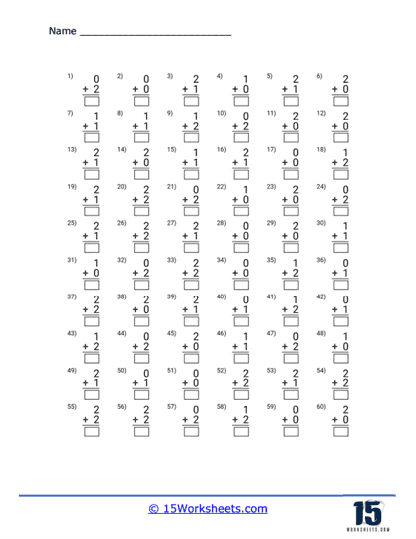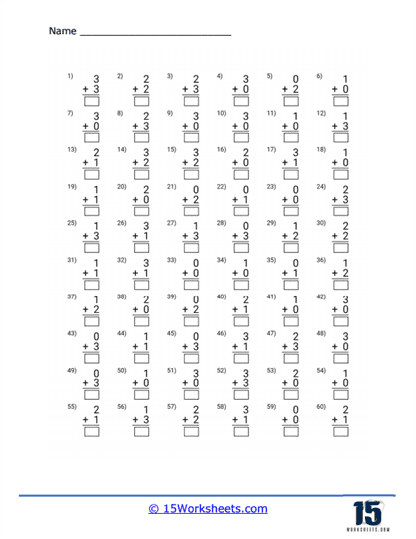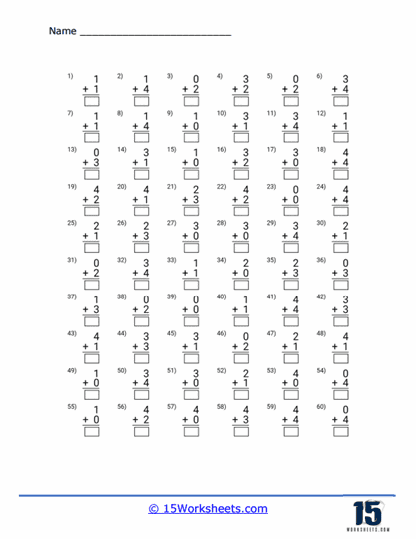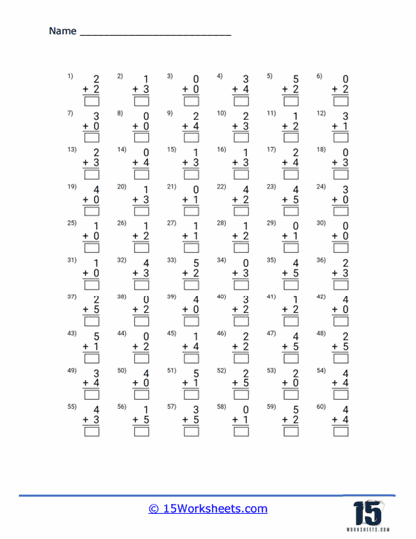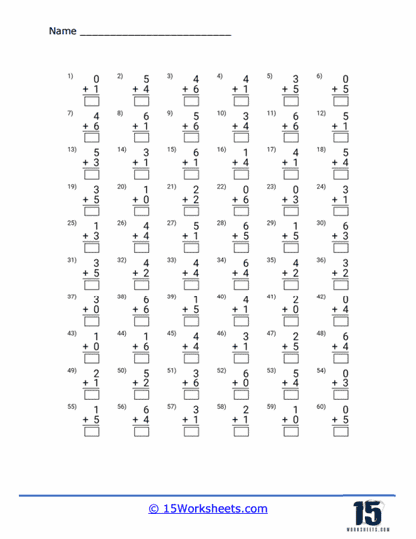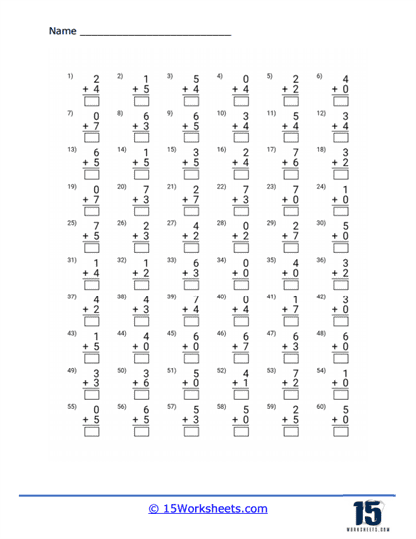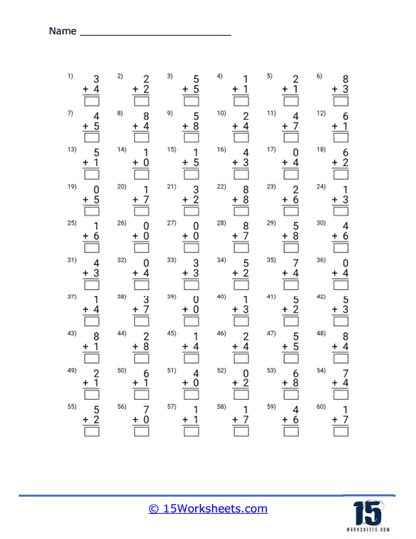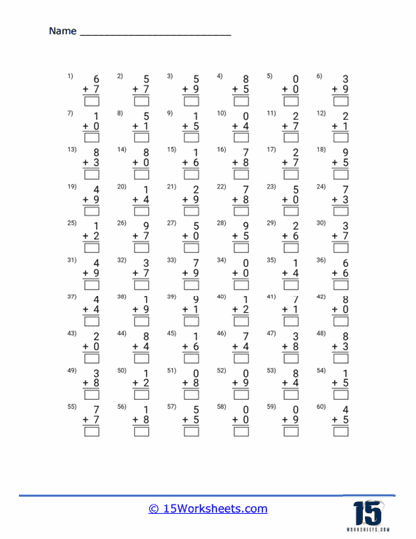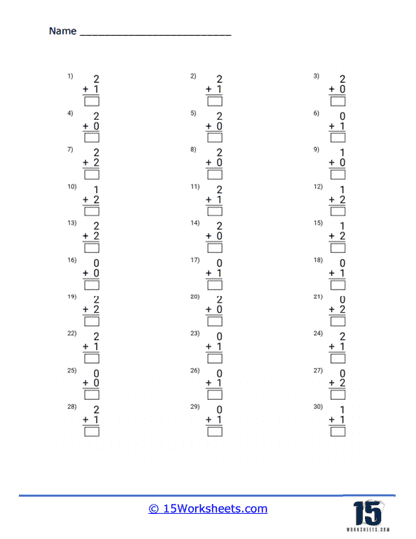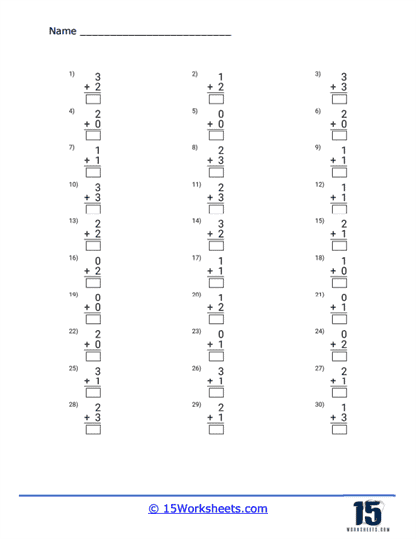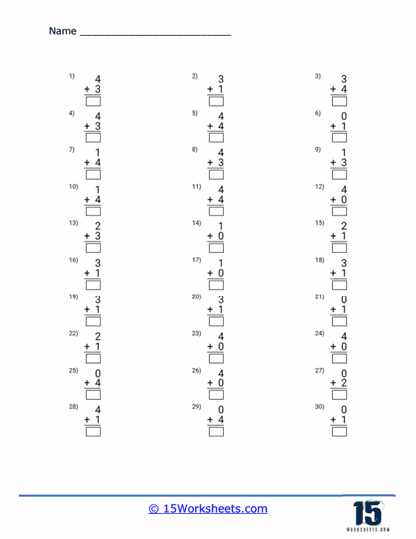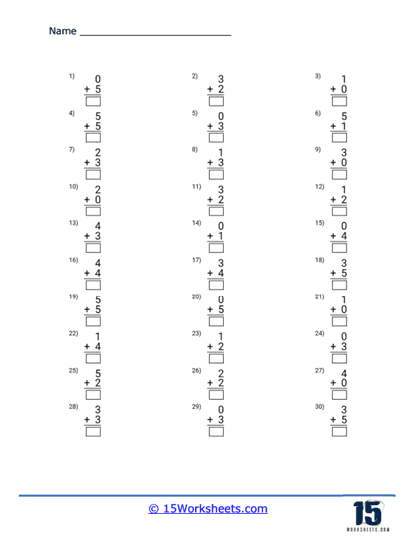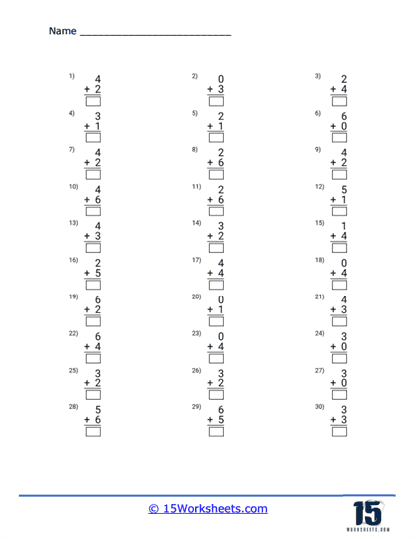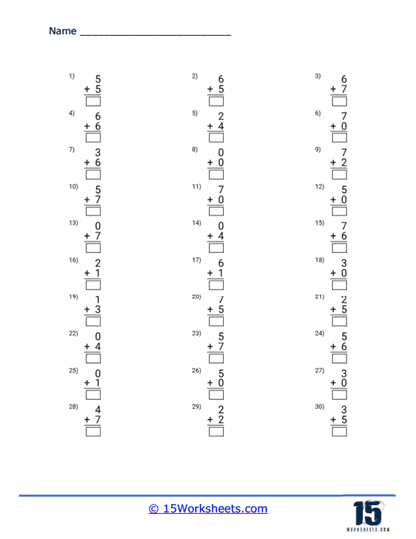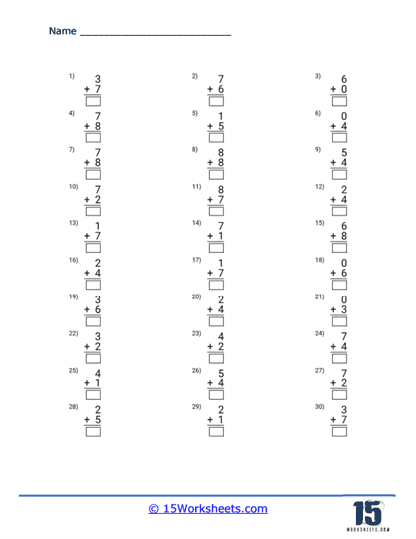Mad Minute Addition Worksheets
All About These 15 Worksheets
These Mad Minute Addition worksheets are designed to help students improve their addition skills and increase their speed and accuracy in solving equations or problems involving this basic math operation.
Each worksheet in this series contains a set of column addition problems that students must solve within a specified time frame, typically one minute. The worksheets are designed to be fast-paced and challenging, providing an engaging way for students to practice their addition skills.
The problems included in the Mad Minute Addition worksheet series are all column addition problems that involve adding two one-digit numbers together. These problems help students develop a strong foundation in addition and mental math abilities.
Each worksheet in the series contains a mix of problems with varying degrees of difficulty. The problems are presented in a random order to prevent students from relying on memorization and encourage them to use their problem-solving skills.
This series of Mad Minute Addition worksheets is an effective way to help students improve their addition skills and build their confidence in solving addition problems. By completing these worksheets regularly, students can increase their speed and accuracy in adding two one-digit numbers together, which can help them in higher-level math courses and in everyday life.
What Are Mad Minute Addition Worksheets?
They are a type of math practice worksheet designed to help students improve their addition skills and increase their speed and accuracy. These worksheets typically contain a series of addition problems with a specified time limit, usually one minute, for students to complete as many problems as possible. The goal is for students to become more fluent and efficient in solving addition problems through repetition and practice.
These worksheets can be used in a classroom setting or as a practice tool at home. Teachers may use them as timed exercises to encourage students to improve their speed and accuracy or as a fun, competitive activity among classmates. Parents can also use Mad Minute Addition Worksheets to help their children practice and reinforce their addition skills outside of school.
Timed math activities can be valuable in certain situations, as they offer several benefits when used appropriately. However, they may not be suitable for every student or every learning objective. Here are some advantages and potential drawbacks of using timed math activities:
Advantages
- Increased Fluency – Timed activities can help students develop math fluency by encouraging them to solve problems quickly and accurately. This can be particularly beneficial for basic arithmetic, where a strong foundation is essential for more advanced math concepts.
- Practice Under Pressure – Timed activities can help students become more comfortable working under time constraints, which they may encounter in standardized tests or real-life situations where quick problem-solving is necessary.
- Improved Focus – The time limit can motivate students to concentrate on the task at hand, potentially improving their focus and efficiency.
- Friendly Competition – Timed activities can introduce an element of friendly competition, which can motivate some students to challenge themselves and improve their skills.
Potential Drawbacks
- Increased Anxiety – Timed activities can cause anxiety for some students, which may negatively affect their performance or overall attitude toward math.
- Overemphasis on Speed – Focusing too much on speed can lead students to prioritize completing problems quickly over truly understanding the underlying concepts, which may hinder their long-term mathematical development.
- Exclusion of Struggling Students – Timed activities may not be suitable for students with learning difficulties, as they may struggle to keep up with the pace and become discouraged.
To make the most of timed math activities, teachers should consider the specific needs and abilities of their students, as well as the learning objectives. It’s essential to balance timed activities with other types of learning experiences that prioritize understanding and mastery of mathematical concepts. This can help ensure that students develop a well-rounded foundation in math while still benefiting from the advantages that timed activities can provide.
It’s important to note that while increasing speed and accuracy is a goal, understanding and mastering the concepts behind addition should remain the primary focus. Speed and accuracy will naturally improve with consistent practice and a strong foundation in mathematical understanding.

